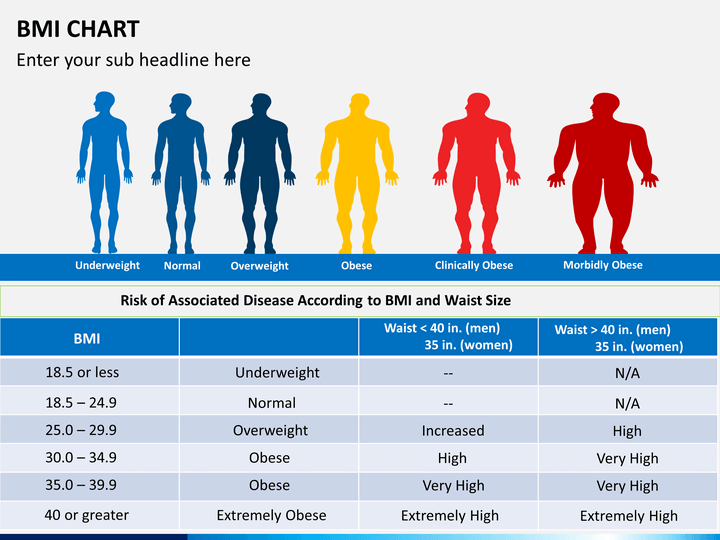Body Mass Index (BMI)
The weight that is higher than what is considered as a healthy weight for a given height is described as overweight or obese. Body Mass Index, or BMI, is used as a screening tool for overweight or obesity.
Adult Body Mass Index (BMI)
Body Mass Index (BMI) is a person’s weight in kilograms divided by the square of height in meters. A high BMI can be an indicator of high body fatness.
To calculate BMI, see the Adult BMI Calculator or determine BMI by finding your height and weight in this BMI Index Chart:
- If your BMI is less than 18.5, it falls within the underweight range.
- If your BMI is 18.5 to <25, it falls within the normal.
- If your BMI is 25.0 to <30, it falls within the overweight range.
- If your BMI is 30.0 or higher, it falls within the obese range.
Obesity is frequently subdivided into categories:
- Class 1: BMI of 30 to < 35
- Class 2: BMI of 35 to < 40
- Class 3: BMI of 40 or higher. Class 3 obesity is sometimes categorized as “extreme” or “severe” obesity.

Note: At an individual level, BMI can be used as a screening tool but is not diagnostic of the body fatness or the health of an individual. A trained healthcare provider should perform appropriate health assessments in order to evaluate an individual’s health status and risks.
BMI does not measure body fat directly, but research has shown that BMI is moderately correlated with more direct measures of body fat obtained from skinfold thickness measurements, bioelectrical impedance, underwater weighing, dual energy x-ray absorptiometry (DXA) and other methods. Furthermore, BMI appears to be strongly correlated with various adverse health outcomes consistent with these more direct measures of body fatness.
References:
http://www.parsiteb.com
cdc.gov
 Parsi Teb Physical and Mental Health Journal
Parsi Teb Physical and Mental Health Journal 



